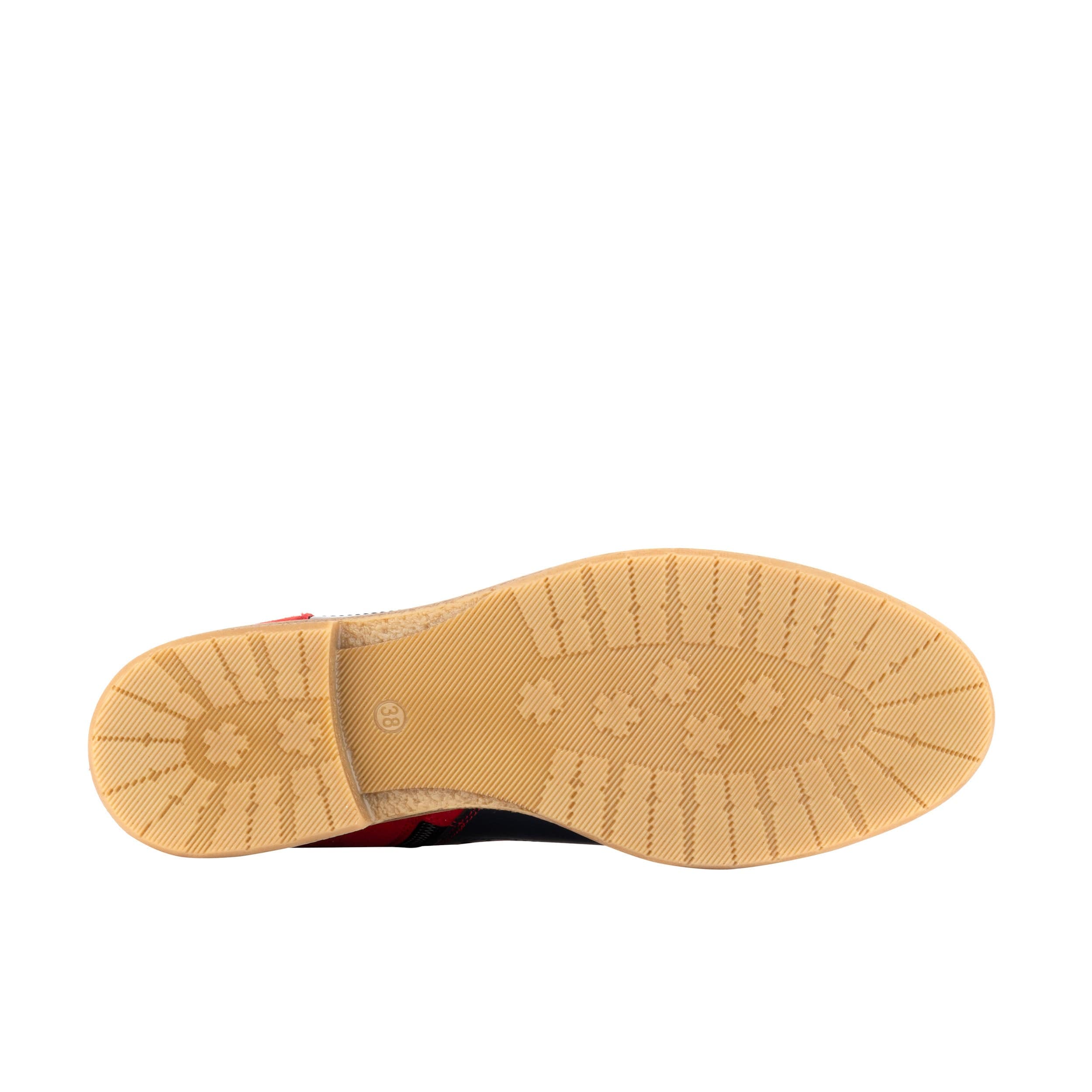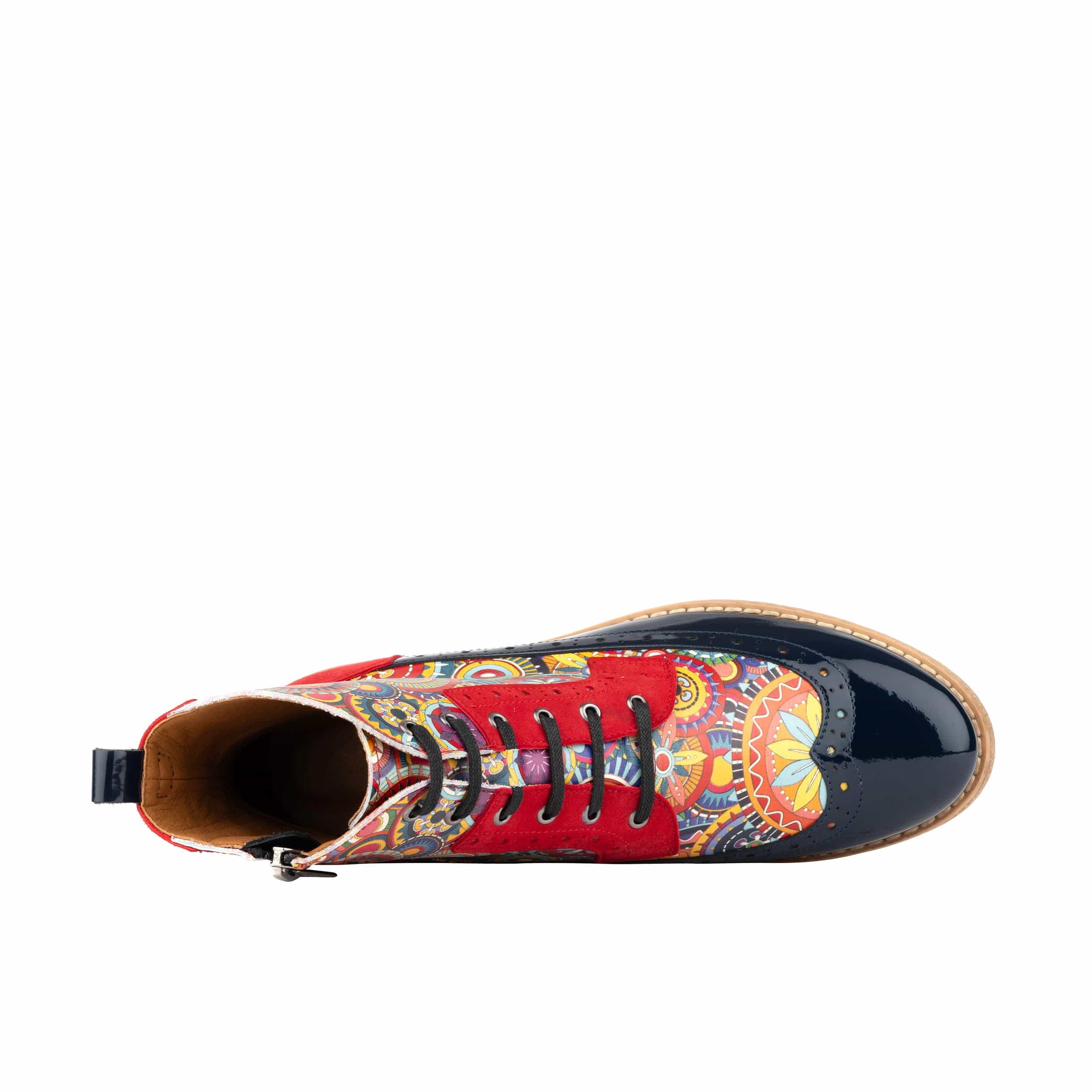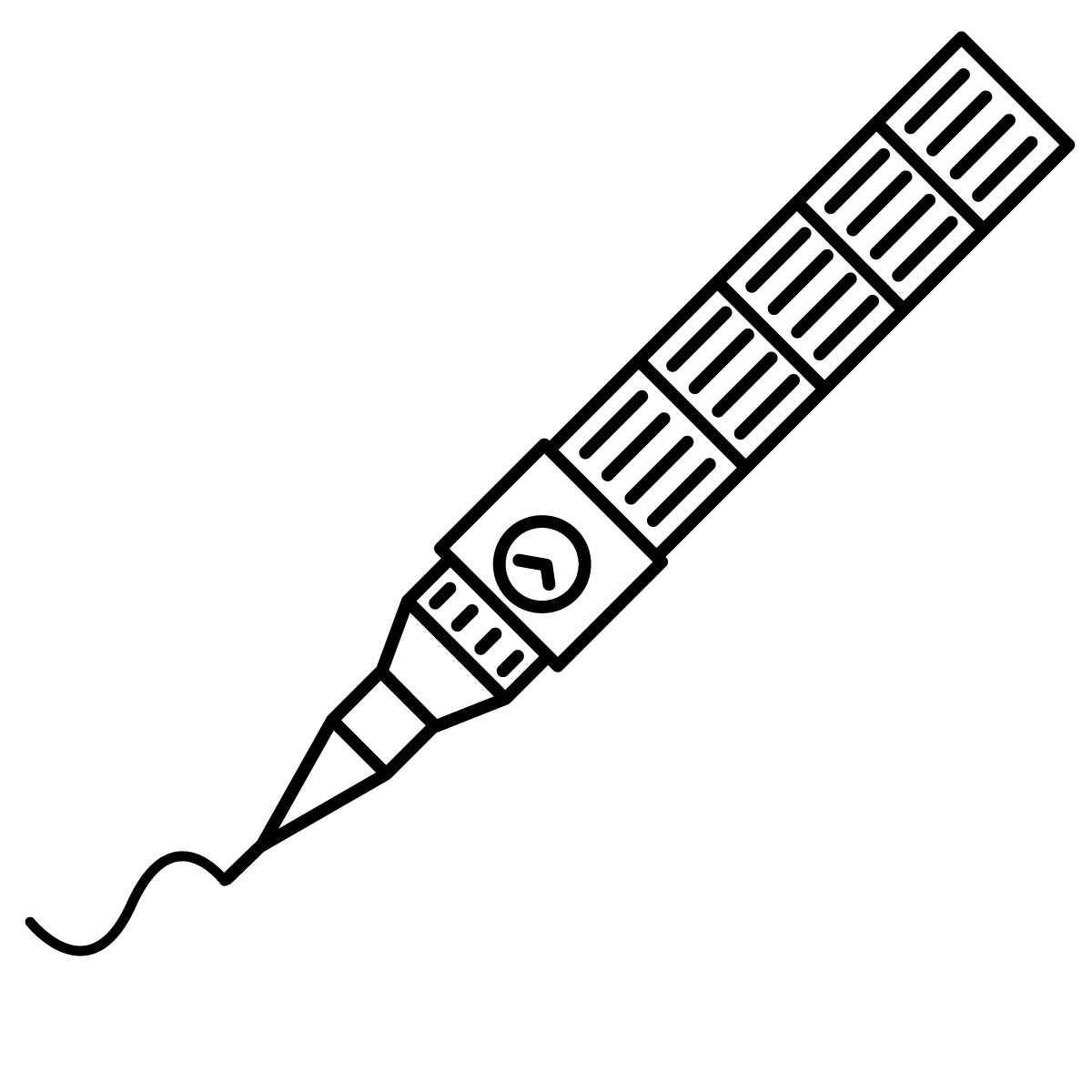








Hatter Red Navy
Women's leather ankle boot with laces and zipCheckout securely with
Free In-Store Pickup available at
Gewöhnlich fertig in 1 Stunde
To collect, please select your preferred location during checkout.

Hatter - Red Navy - Women's leather ankle boot with laces and zip
UK 2 / EU 35 / US 4
Brighton
22 Bond Street
Embassy London
Brighton BN1 1RD
Vereinigtes Königreich
Canterbury
11 Mercery Lane
Canterbury CT1 2JL
Vereinigtes Königreich
Camden
207 Chalk Farm Road
Embassy London
London NW1 8AB
Vereinigtes Königreich
Greenwich
2a Greenwich Market
Embassy London
London SE10 9HZ
Vereinigtes Königreich
Free UK delivery over £75

Free UK Returns
Next Day Delivery order by 12PM

Handcrafted in Europe

Designed in London
Product Details
- European Leather inside and outside
- Handcrafted in Europe
- Comfortable rubber sole
- Lace-up closure for a personalised fit
- Side zip for convenience, easy slip on and off.
Effortless chic boots with a great mix of leather and suede. Let the Italian leather comfort your feet. Easy to wear with the laces at the front and zip at the side.
Delivery & Returns
UK Standardversand + kostenlose Rücksendung
4,95 £
Lieferung 1–5 Werktage
KOSTENLOS - Lieferung für Bestellungen über 100 £
DHL REST DER WELT (10–15) Werktage
£ 19,95
Lieferung 15–20 Werktage
Optionen auswählen






































